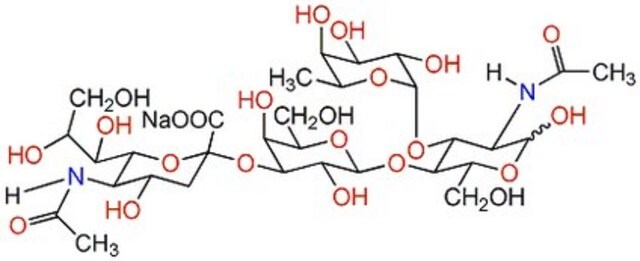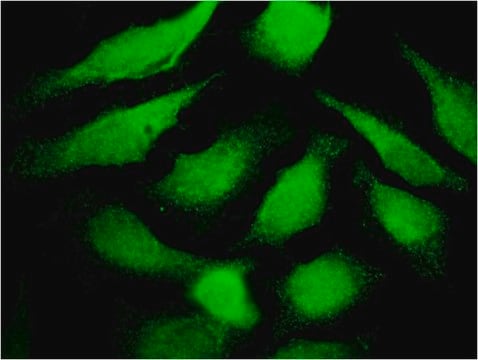53886
Tn Antigen
≥99.0% (TLC), powder or crystals
Sinonimo/i:
GalNac-α-1-O-serine, O-[2-(Acetylamino)-2-deoxy-α-D-galactopyranosyl]-L-serine
Scegli un formato
CHF 393.00
Spedizione prevista il28 maggio 2025
Scegli un formato
About This Item
CHF 393.00
Spedizione prevista il28 maggio 2025
Prodotti consigliati
Nome del prodotto
Tn Antigen, ≥99.0% (TLC)
Saggio
≥99.0% (TLC)
Stato
powder or crystals
Temperatura di conservazione
−20°C
Stringa SMILE
CC(=O)N[C@@H]1[C@@H](O)[C@@H](O)[C@@H](CO)O[C@@H]1OC[C@H](N)C(O)=O
InChI
1S/C11H20N2O8/c1-4(15)13-7-9(17)8(16)6(2-14)21-11(7)20-3-5(12)10(18)19/h5-9,11,14,16-17H,2-3,12H2,1H3,(H,13,15)(H,18,19)/t5-,6+,7+,8-,9+,11-/m0/s1
REDMNGDGDYFZRE-WKWISIMFSA-N
Descrizione generale
Azioni biochim/fisiol
Confezionamento
Codice della classe di stoccaggio
11 - Combustible Solids
Classe di pericolosità dell'acqua (WGK)
WGK 3
Punto d’infiammabilità (°F)
Not applicable
Punto d’infiammabilità (°C)
Not applicable
Dispositivi di protezione individuale
Eyeshields, Gloves, type N95 (US)
Scegli una delle versioni più recenti:
Possiedi già questo prodotto?
I documenti relativi ai prodotti acquistati recentemente sono disponibili nell’Archivio dei documenti.
I clienti hanno visto anche
Active Filters
Il team dei nostri ricercatori vanta grande esperienza in tutte le aree della ricerca quali Life Science, scienza dei materiali, sintesi chimica, cromatografia, discipline analitiche, ecc..
Contatta l'Assistenza Tecnica.![Fmoc-Ser[GalNAc(Ac)3-α-D]-OH 95%](/deepweb/assets/sigmaaldrich/product/structures/252/386/8c4549fe-ca62-45cc-b3a5-21b42bdb2b6a/640/8c4549fe-ca62-45cc-b3a5-21b42bdb2b6a.png)







![Fmoc-Thr[GalNAc(Ac)3-α-D]-OH 97%](/deepweb/assets/sigmaaldrich/product/structures/250/325/42734f24-7836-4aaa-ba6a-6284bf7e8181/640/42734f24-7836-4aaa-ba6a-6284bf7e8181.png)
